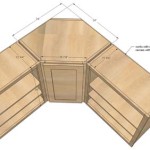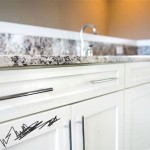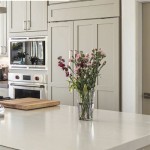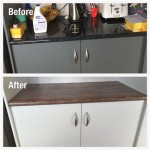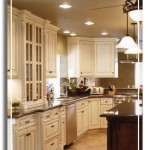Storing Kitchen Cabinets: A Comprehensive Guide
Kitchen cabinets, whether brand new awaiting installation or carefully removed during a renovation, represent a significant investment. Proper storage is crucial to protect these valuable assets from damage, ensuring they remain in pristine condition until needed. This article will explore the essential aspects of storing kitchen cabinets, encompassing preparation, suitable storage environments, and ongoing maintenance considerations.
The need for cabinet storage arises in several common situations. Homeowners undertaking kitchen remodels often choose to retain existing cabinets for use in other areas of the home, such as a garage, basement workshop, or laundry room. Alternatively, new cabinets may arrive before the kitchen is fully prepared for installation, necessitating temporary storage. Contractors may also need to store cabinets off-site due to space constraints at the job location or scheduling delays. In each of these scenarios, following best practices for cabinet storage mitigates the risk of costly repairs or replacements.
Preparation is Paramount: Cleaning and Protection
Prior to placing cabinets in storage, thorough cleaning is essential. Dust, grease, and food particles can attract pests and contribute to the deterioration of the cabinet finish. Begin by wiping down all surfaces with a damp cloth and a mild detergent solution. For stubborn stains or grease, a specialized kitchen cleaner may be necessary, but always test the product in an inconspicuous area first to ensure it does not damage the finish.
Once the cabinets are clean and dry, protective measures must be implemented. Padding each cabinet individually helps prevent scratches and dents during handling and storage. Moving blankets, furniture pads, or even thick cardboard can serve as effective cushioning materials. Wrap each cabinet completely, securing the padding with packing tape. Pay particular attention to corners and edges, as these areas are most susceptible to damage.
Hardware removal is another crucial step in the preparation process. Knobs, pulls, hinges, and other hardware components should be detached from the cabinets and stored separately. This prevents them from scratching the cabinet surfaces or becoming lost during storage. Place all hardware items in labeled bags or containers to facilitate easy reassembly when the cabinets are eventually installed. Consider taking photographs of the hardware placement before removal to further simplify the reinstallation process.
Doors and drawers require special attention. Ideally, doors should be removed entirely and stored flat. If removal is not feasible, secure the doors with tape or straps to prevent them from swinging open and causing damage. Drawers should be completely emptied and either removed or adequately secured to prevent them from sliding out. Failure to properly secure doors and drawers can lead to significant damage, particularly during transportation or handling.
Selecting the Ideal Storage Environment: Climate Control and Safety
The storage environment plays a critical role in preserving the condition of kitchen cabinets. The ideal storage space should be clean, dry, and climate-controlled. Fluctuations in temperature and humidity can cause wood to warp, crack, or swell. Excessive humidity can also promote mold and mildew growth, which can permanently damage the cabinet finish.
If possible, store cabinets in an indoor location such as a spare room, garage, or basement. A climate-controlled storage unit is an even better option, as it provides consistent temperature and humidity levels. Avoid storing cabinets in areas that are prone to leaks, flooding, or extreme temperature variations, such as an attic or an uninsulated shed. Direct sunlight should also be avoided, as it can fade the cabinet finish over time.
Protecting cabinets from pests is another important consideration. Rodents and insects can cause significant damage to wood cabinets, so it is essential to take preventative measures. Inspect the storage area for signs of pest activity and address any issues before storing the cabinets. Consider using pest control products such as traps or bait stations to deter pests. Regularly inspect the cabinets for any signs of infestation during the storage period.
Arranging the cabinets within the storage space is also important. Avoid stacking cabinets directly on top of each other, as this can put undue pressure on the lower cabinets and potentially cause damage. Instead, use pallets or sturdy platforms to elevate the cabinets off the floor. This will also help protect them from moisture and pests. When arranging the cabinets, leave adequate space between them to allow for air circulation. This will help prevent the buildup of moisture and reduce the risk of mold growth.
Security is a final, but crucial, aspect of storage environment selection. Ensure the storage location is secure from theft or vandalism. If storing cabinets in a garage or shed, consider adding extra security measures such as a reinforced door, window bars, or a security system. If using a storage unit, choose a reputable facility with adequate security personnel and surveillance cameras.
Ongoing Maintenance and Inspection: Preserving Cabinet Integrity
Even in a well-prepared storage environment, periodic maintenance and inspection are necessary to ensure the continued preservation of kitchen cabinets. Regularly inspect the cabinets for any signs of damage, such as scratches, dents, or warping. Address any issues promptly to prevent them from worsening.
Check for signs of moisture or pest activity. If moisture is present, identify the source and take steps to eliminate it. Consider using a dehumidifier to lower the humidity level in the storage area. If pest activity is detected, take appropriate pest control measures to eradicate the infestation. Regular cleaning is also essential to remove dust and debris that may accumulate over time. Gently wipe down the cabinets with a damp cloth every few months to keep them clean and prevent the buildup of dirt.
If the cabinets are stored for an extended period, consider rotating them periodically. This will help prevent warping or sagging. Store doors flat to prevent warping. Rotate the doors periodically to ensure that the weight is evenly distributed.
When the time comes to remove the cabinets from storage, handle them with care. Avoid dropping or bumping them during transport. Use padding to protect them from scratches and dents. Inspect the cabinets thoroughly before installation to ensure that they are in good condition. Address any minor repairs or touch-ups before installing the cabinets. Following these maintenance procedures will ensure that the kitchen cabinets remain in excellent condition throughout the storage period, ready for installation when needed.
Proper planning and execution are key to successfully storing kitchen cabinets. By meticulously cleaning and protecting the cabinets, selecting an appropriate storage environment, and implementing ongoing maintenance procedures, homeowners and contractors can safeguard their investment and ensure that the cabinets remain in pristine condition until they are ready for installation.
:strip_icc()/121035540_331772381251072_3717720175166945340_n-ae336a3237ca44c6bdddd093c7d1eb97.jpg?strip=all)
21 Kitchen Cabinet Organization Ideas You Need To Try

Best Way To Organize Kitchen Cabinets Step By Project The Container

Cabinet Organization Tips Food Storage 101

Lower Cabinet Organization Starter Kit The Container

Kitchen Cabinet Organization Ideas Clean And Scentsible

How To Organize Kitchen Drawers And Cabinets Shannon Gold Design

The Best Way To Organize Kitchen

How To Organize Kitchen Cabinets A Step By Guide

Kitchen Organizing Tips Young House Love

How To Small Appliances Inside Kitchen Cabinets The Homes I Have Made
Related Posts

